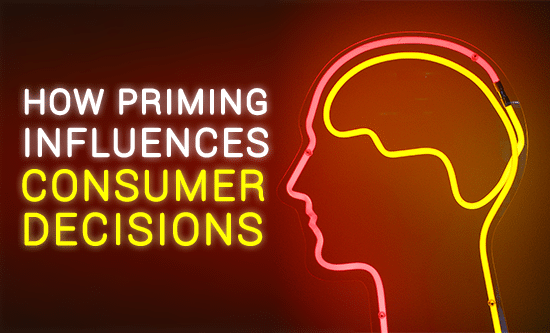On a scale of 1-10, how conscious would you say you are in your purchasing decisions? I imagine that most of you will probably rate yourselves a 7 or 8. Surprisingly, a number of studies on the issue reveal that our decisions may not be as unbiased and independent as we’d like to think. In fact, when it comes to making purchasing decisions, we are constantly influenced by subconscious factors, such as images, sounds, words, smells and tastes, all without us even realising it!
These ‘hidden’ influences – things that affect our judgment, actions or motivations – are what we commonly refer to as “priming”.
During their study titled “The influence of in-store music on wine selections”, researchers North, Hargreaves, & McKendrick used music as a tool to influence customers’ choice of wine. Over a two-week period, the supermarket where the experiment took place played French and German music on alternate days near an in-store display of French and German wine. Interestingly, at the end of the trial, it was evident that French music led to greater sales of French wines, whereby German music led to the increased sales of German wine. Responses to questionnaires from customers indicated that they were almost completely unaware of the effects of the music on their wine choices.
Depending on your target audience and the product being advertised, as a marketer, you can utilise a range of different ‘priming’ techniques. These include:
- Activating people’s ‘desired identities’: by using words such as “us” and “we”, customers may be primed to feel a collective sense of identity that will spur them into action e.g. Whole Foods came up with “Together, we can make a difference” slogan to promote bag reuse. Wording your message this way would most likely encourage customers to embark on collective action.
- Subconscious cues can drive behaviour changes: colours and ‘emotional hints’ can prime consumers to act in search of certain emotions. For example, Coca-Cola’s signature red colour (representing emotion and passion), combined with the message ‘open the happy can’, creates a yearning for immediate satisfaction.
- Provide options to guide decision-making: providing your customers with suggestions and targeted options, ensure that they have a point of reference for their decisions. For example, by suggesting that most restaurant patrons tip 15%, it’s likely that most customers will tip somewhere in the vicinity of 15%.
- Build brand recognition via social sharing: when content is shared by someone from your social circle, it’s more likely that you’ll extend your trust to the same products. People share content if they see value in it and if it doesn’t take too much effort. Helping your customers express and share opinions online can make a big difference. Make sure to define the right channels for your business: consider social media, industry blogs and forums, and review platforms like Tripadvisor.
Regardless of your industry, priming is an effective tool that can be used to influence consumers’ decisions.
However, it’s important to remember that at the risk of consumers feeling manipulated, all priming must be both ethical and subtle. When used correctly, i.e. with a comprehensive understanding of the needs, desires, and motivations of consumers, priming can be one of the strongest tools available to drive sales growth and brand recognition.
Curious about other psychological techniques you can add to your marketing toolbox? Subscribe to our newsletter!
 By Helena Woo, Strategic Customer Engagement Director at DA.
By Helena Woo, Strategic Customer Engagement Director at DA.
With over 25 years of experience in data-driven marketing, she is constantly looking for ways to innovate, leading the strategic vision and value proposition for our clients. Helena has helped clients across industries achieve their marketing goals, marrying data and technology to deliver great customer experiences.
[pardot-form id=”46577″ title=”Blog Sign up test1″]



